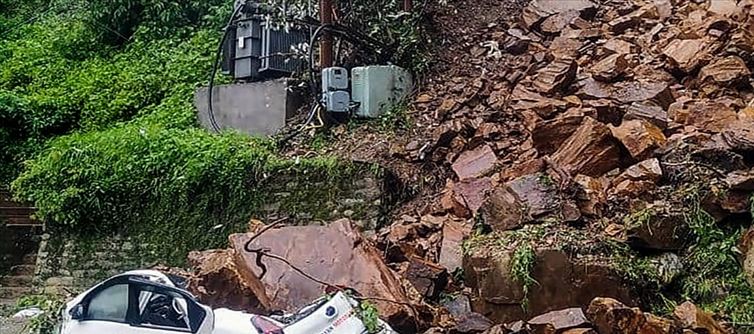
What are the major landslide incidents in India…?
Major landslides have occurred in many places in India. Some of these are recent incidents. Such as Varnavat in Uttarkashi district of Uttarakhand, Malpa in Pithoragarh district, Okhimath in Chamoli district and Paglajhora in darjeeling district of West Bengal. Apart from this, major landslides have also occurred in sikkim and Aizawl, the capital of Mizoram. Apart from this, earlier on 18 september 1948, 500 people were killed in this landslide caused by heavy rains in Guwahati. On 4 october 1968, more than 1000 people died in this landslide caused by flood in darjeeling and a 60 km long road was divided into 91 pieces.
On 16 July 2013, 5700 people were killed and 42,000 villages were affected in the landslide caused by flood in Kedarnath. On 10 march 2018, more than 400 people were killed and 106 houses were destroyed in a landslide caused by heavy rains in Kuwari, Uttarakhand. On 6 august 2020, 80 people were killed in a landslide due to continuous rain in Pettimudi, Kerala.
Where is the risk of landslides more in India?
There is a risk of landslides in many places in india too. About 12.6% of the country's area, i.e. 4.2 lakh square kilometers of land (excluding snow areas), is at risk of landslides. Out of this, 1.8 lakh square kilometers of land is in the Northeast himalayas, which also includes darjeeling and Sikkim. Apart from this, 1.4 lakh square kilometers of land is in the North West himalayas, which includes Uttarakhand, himachal pradesh and Jammu and Kashmir. In india, about 0.9 lakh square kilometers of Western Ghats and Konkan Hills are at risk of landslides. This area includes the states of tamil Nadu, Kerala, Karnataka, goa and Maharashtra. Apart from this, about 0.1 lakh square kilometer area of Eastern Ghats in Aruku region of andhra pradesh is also sensitive to landslides. Most landslides in india occur during monsoon season. Due to the height of the mountains and heavy rainfall, the risk of landslides is highest in the himalayas and Western Ghats.




 click and follow Indiaherald WhatsApp channel
click and follow Indiaherald WhatsApp channel